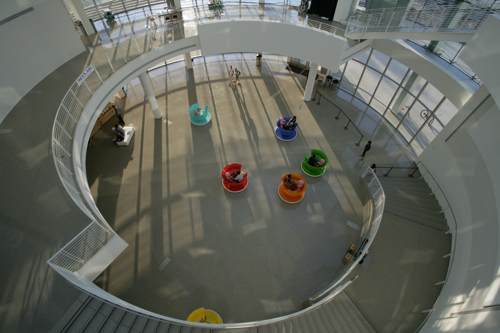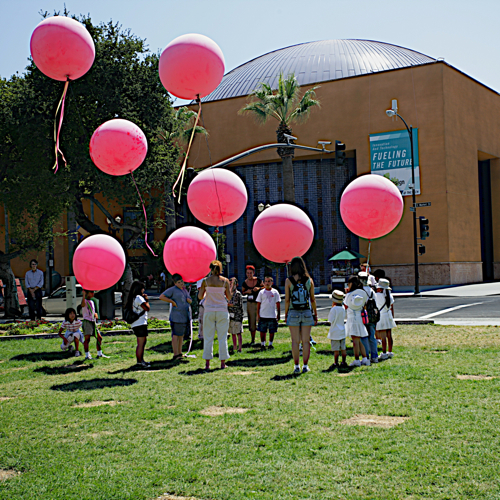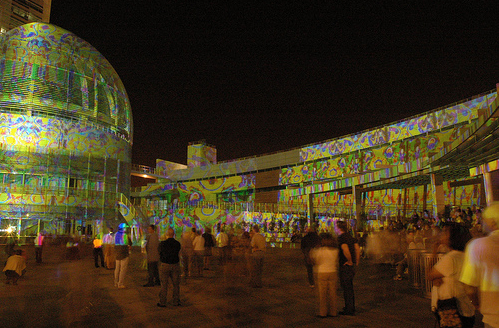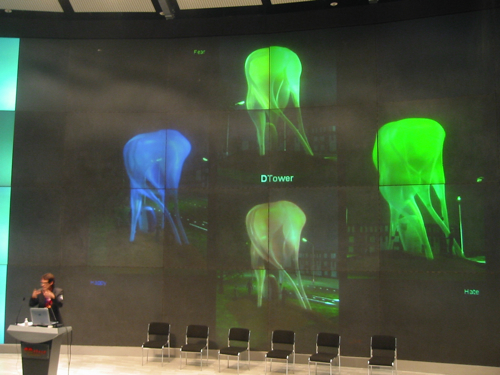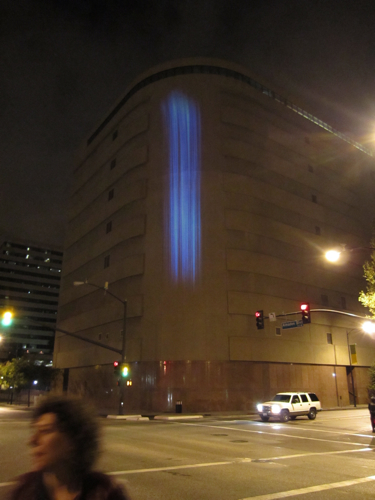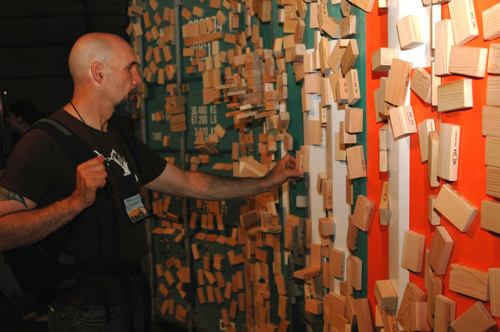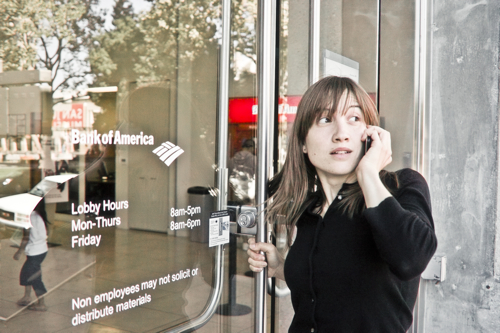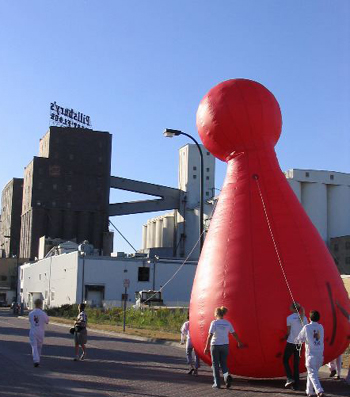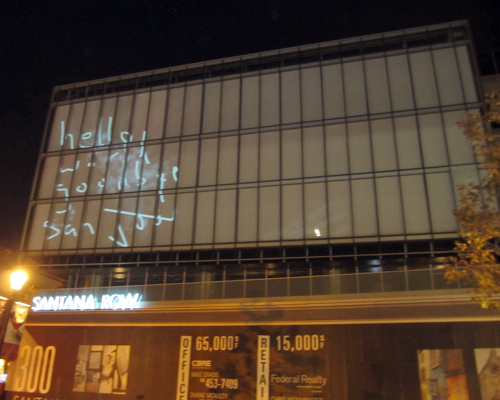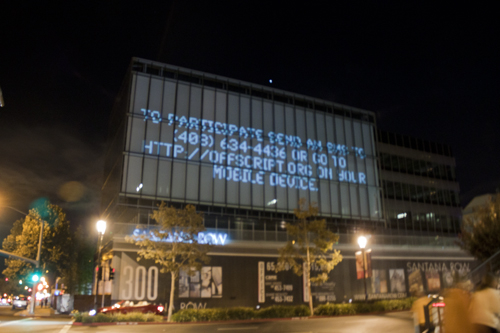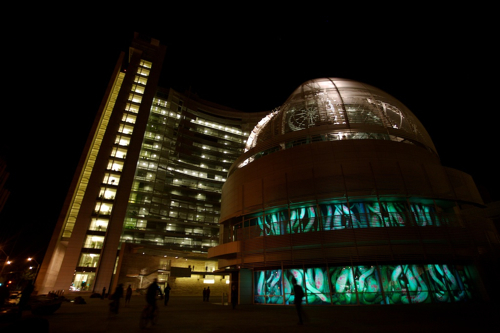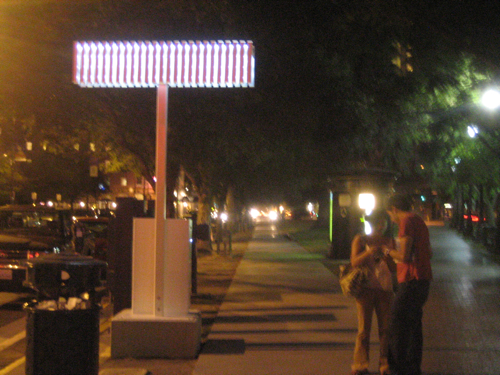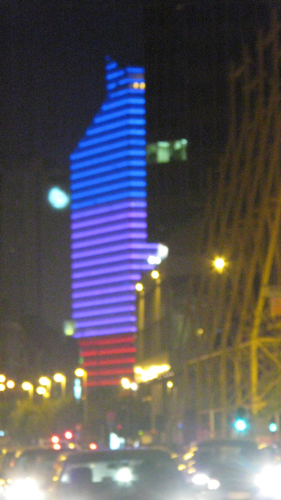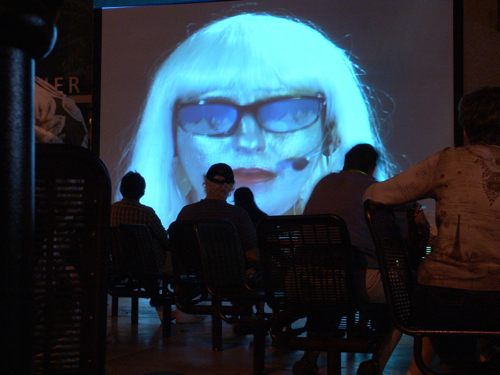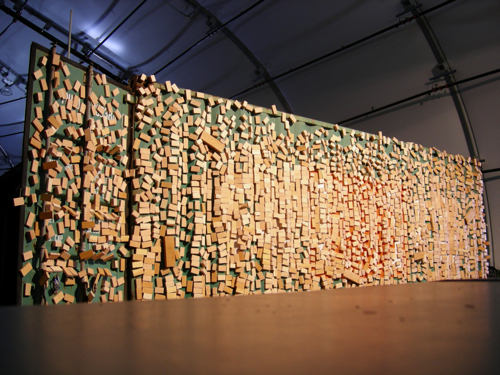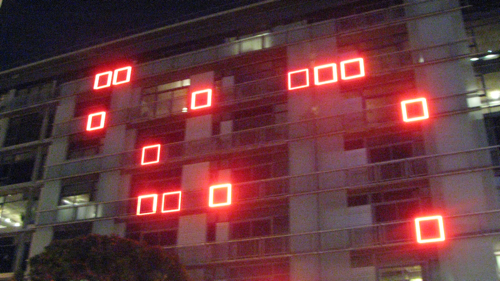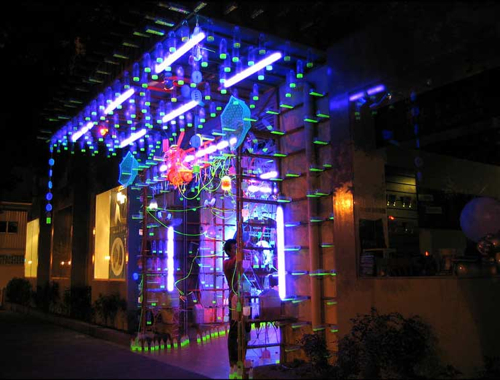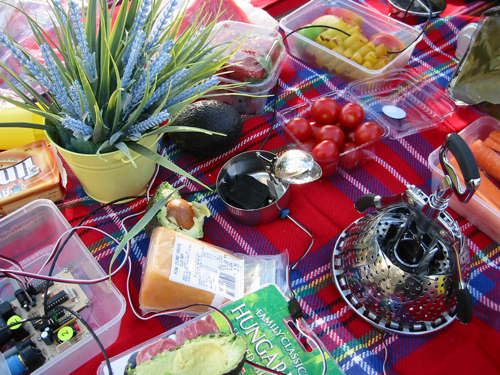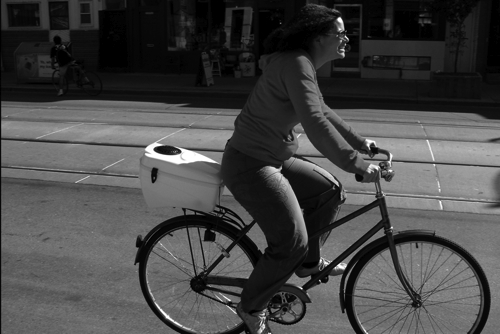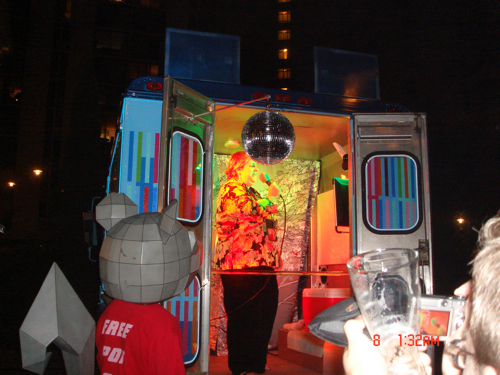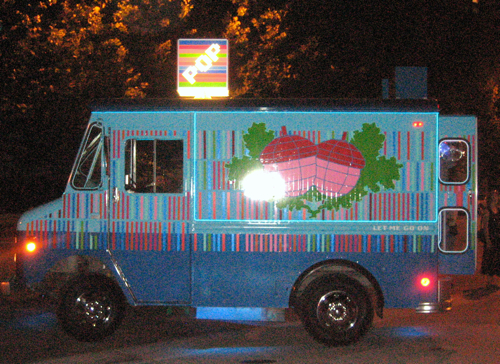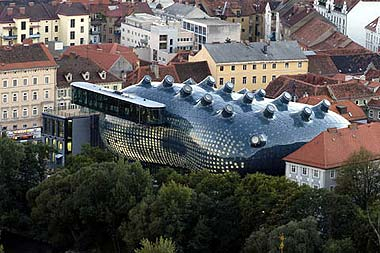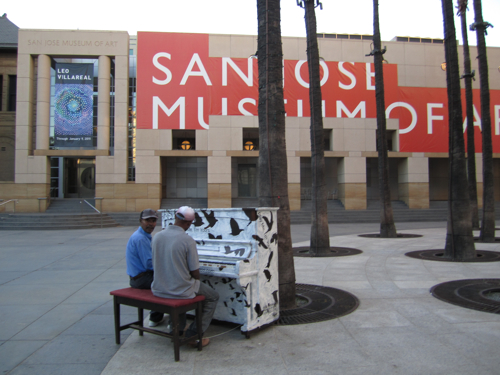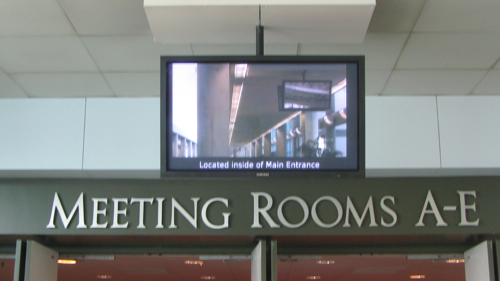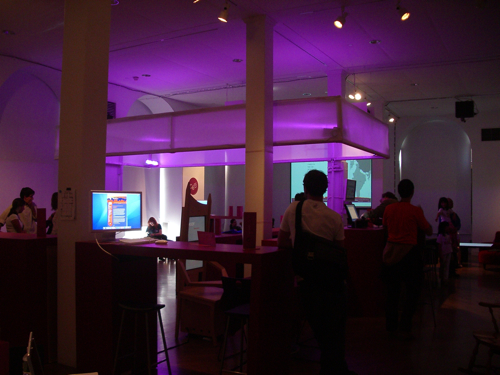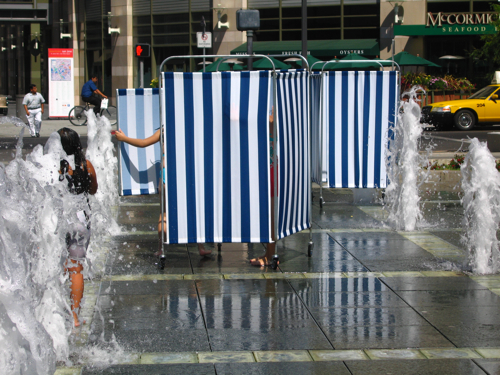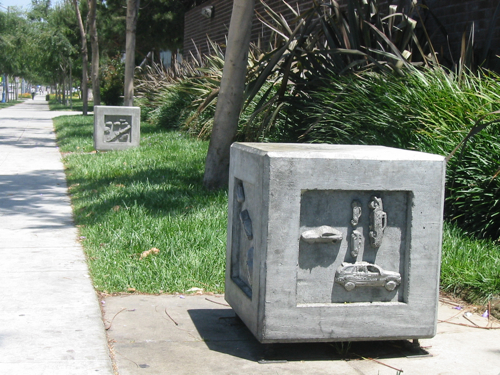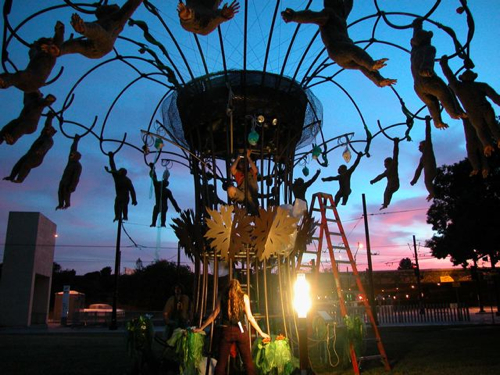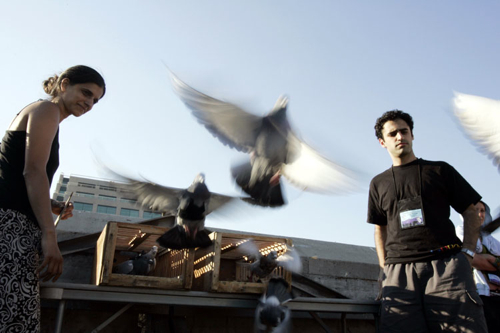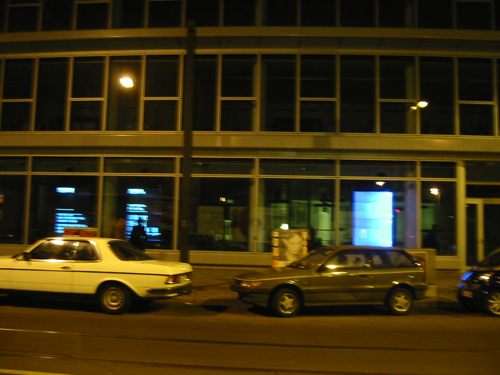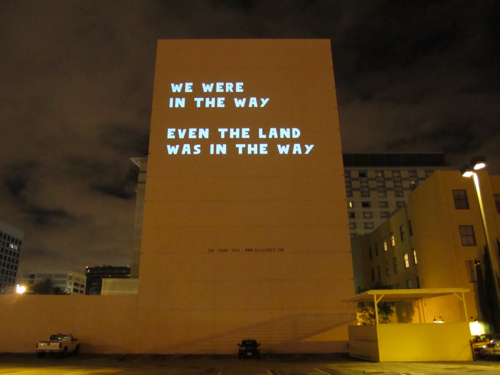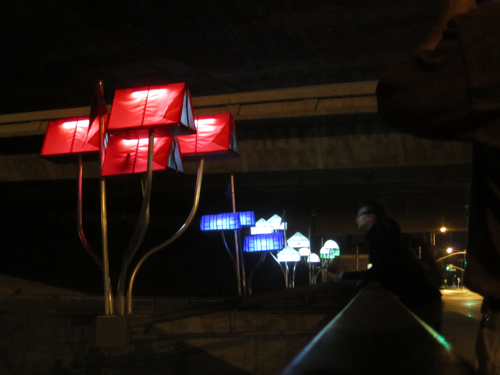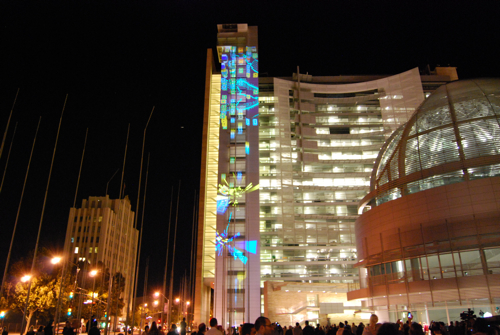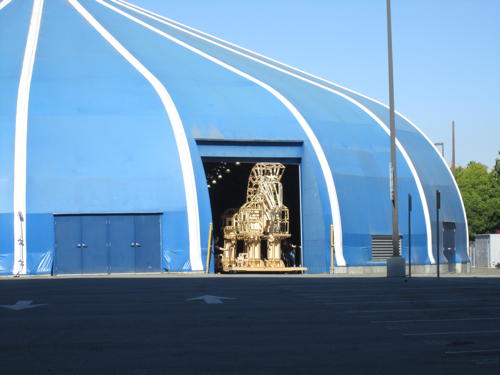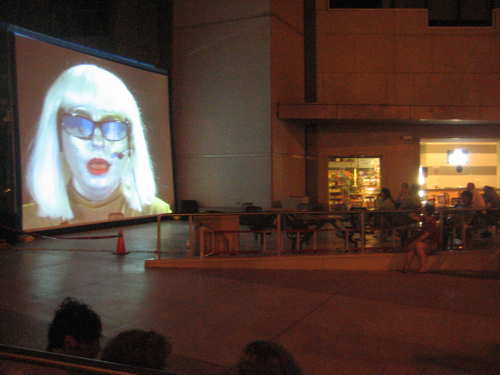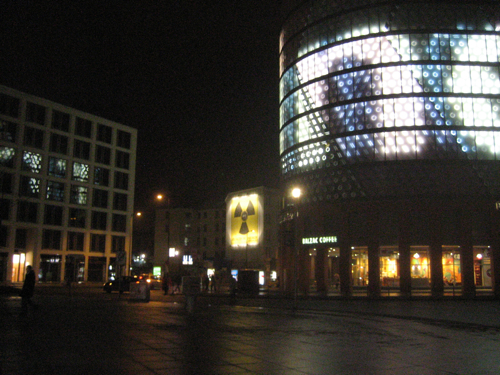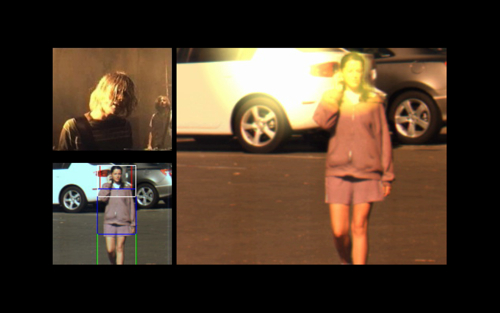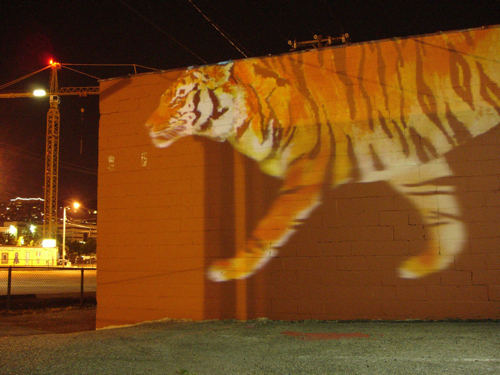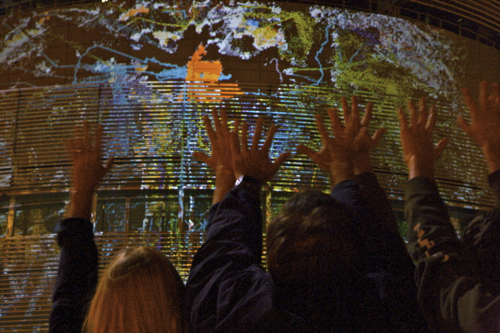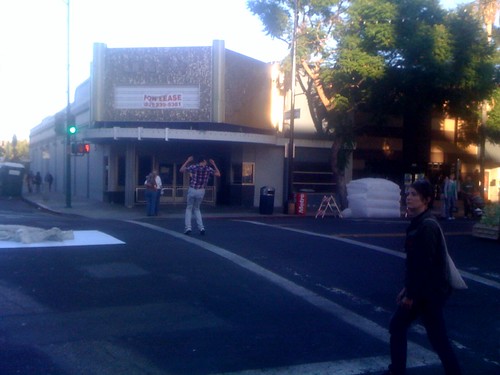The Responsive City – Fact or Fiction?
CAA 2011 Conference
Thursday, February 10, 2011, 5:30 pm – 7:00 pm
On site at the Hilton Conference Center, 3rd Floor, Trianon Ballroom
Free and open to the public
http://conference.collegeart.org/2011/sessions/sessions.php?period=2011-02-10
http://www.newmediacaucus.org/wp/caa-2011-conference-nmc-events-and-activities/
http://www.facebook.com/event.php?eid=193076990718038
Chair
Steve Dietz, Northern Lights.mn
This panel will examine the experience of artists and presenters with large-scale, long-term interactive art in the public sphere and the pragmatic, conceptual and philosophical issues such projects engender.
There is a significant history of festival and exhibition-based public programming of interactive works but long-term and permanent installations are less common. The possibilities for large-scale, interactive art in the public sphere are increasing exponentially, however, and this panel will consist of at least two artists and a presenter, who will discuss their projects in relation to the pragmatics of production and the histories of public and new media art practices, as well as the intersection with civic and economic imperatives embodied in the notion of the creative city. A respondent will critique these projects in relation to issues of agency, free speech and spectacle.
Panelists
Barbara Goldstein
Public Art Program Director
City of San Jose
Barbara Goldstein will trace the evolution of interactive cities from early utopian concepts, comic books and Archigram’s “Plug In City” through the manifestation of interactivity in contemporary urban form and the unique role that technology-based art has played in the activation of space and place.
Barbara Goldstein is the Public Art Director for the City of San José Office of Cultural Affairs and the editor of Public Art by the Book, a primer recently published by Americans for the Arts and the University of Washington Press. Prior to her work in San José, Goldstein was Public Art Director for the City of Seattle. Goldstein has worked as a cultural planner, architectural and art critic, editor and publisher. From 1989 to 1993, she was Director of Design Review and Cultural Planning for the Los Angeles Department of Cultural Affairs. From 1980-85 she edited and published Arts + Architecture magazine. She has written for art and architectural magazines both nationally and internationally, and has lectured on public art throughout the United States, and in Canada, Japan, China, Taipei, Korea and Abu Dhabi. She is currently Chair of the Public Art Network for Americans for the Arts.
Cameron McNall
Electroland
Cameron McNall will present 18 topics in 18 minutes, including: Tracking Basketballs; Everybody likes Chic; Hug a Sign; Mr. Zoggs Sex Wax; Restricted vs. Sterile; Fox Tossing; College Faces; Get Smart; Observers, Participants and Performers; RELAX; Urban Nomads; Don’t Try This in Boston; Avatars; Real-Time; Drive-By Disaster; Day and Night; DON’T FREAK OUT
Cameron McNall is an Architect and Principal of the group Electroland. Every Electroland project is site-specific and may employ a broad range of media, including light, sound, images, motion, architecture, interactivity, and information design. Electroland works at the forefront of new technologies to create interactive experiences where visitors can interact with buildings, spaces and each other in new and exciting ways. A pop sensibility, expressed through whimsy and play, helps Electroland to achieve projects that are accessible and that invite visitor participation.
Ben Rubin
Ear Studio / New York University
Beacons, Semaphores, and Panoptical Spires: illuminating the urban skyline
Ben Rubin presents his public illumination projects and discusses the ways changing light technology has altered the fabric of urban life for more than two centuries. With the explosion of LED and other dynamic (and potentially interactive) lighting technologies on city skylines, what is the future of night in the city?
Ben Rubin (b. 1964, Boston, Massachusetts) is a media artist based in New York City. Rubin’s work is in the collections of the Art Institute of Chicago, the San Jose Museum of Art, and the Science Museum, London, and has been shown at the Whitney Museum in New York, the Reina Sofia Museum in Madrid, the Fondation Cartier pour l’art contemporain in Paris, and the ZKM Center for Art and Media in Karlsruhe. Rubin has created large-scale public artworks for the New York Times, the city of San José, and the Minneapolis Public Library. He is currently developing a site-specific sculpture called Shakespeare Machine for the Public Theater in New York, and just completed Beacon (2010), a luminous rooftop sculpture commissioned for National Museum of American Jewish History in Philadelphia.
Respondent
Mark Shepard
University at Buffalo
Mark Shepard is an artist, architect and researcher whose post-disciplinary practice addresses new social spaces and signifying structures of contemporary network culture. His current research investigates the implications of mobile and pervasive media, communication and information technologies for architecture and urbanism. Recent works include the Sentient City Survival Kit, a collection of artifacts for survival in the near-future sentient city; and the Tactical Sound Garden [TSG], an open source software platform for cultivating virtual sound gardens in urban public space, both of which have been presented at museums, festivals and arts events internationally. In 2006 he organized Architecture and Situated Technologies (with Omar Khan and Trebor Scholz), a symposium bringing together researchers and practitioners from art, architecture, technology and sociology to explore the emerging role of “situated” technologies in the design and inhabitation of the contemporary city. In 2009, he curated Toward the Sentient City, an exhibition of commissioned projects that critically explored the evolving relationship between ubiquitous computing and the city. He is the editor of Sentient City: ubiquitous computing, architecture and the future of urban space, published by the Architectural League of New York and MIT Press.
Links
Sentient City: ubiquitous computing, architecture and the future of urban space.
Sentient City exhibition
An exhibition critically exploring the evolving relations between ubiquitous computing, architecture and urban space. Organized by the Architectural League of New York in 2009.
Situated Technologies Pamphlets Series
A series of pamphlet-length publications that examines the implications of contemporary mobile, embedded and responsive systems for architecture and urbanism.
Smiles per hour
This story is a bit old, but it was picked up by FishArePeopleToo and on a Sunday morning it has to, well, bring a smile to your face. Fine type at the bottom of the sign reads:
“The Sustainable Community Progress Indicators Project has been measuring in your area. For more information or to become a smile spy call 9209 6777 or go to www.portphillip.vic.gov.au “Smiles Per Hour.”
The link suggests the genesis of the project:
“Are we a friendly folk here in Port Phillip? Do we smile or say ‘Hi’ to our neighbours and strangers as we walk down the street? Do we even make eye contact, or do we hurry down our street hoping no one will talk to us? In 2005, a survey of residents across our 7 neighbourhoods found that many people yearned for a friendlier neighbourhood, but didn’t know where to start. Some admitted that they also avoided eye contact and a smile with others in their streets.”–via
I’m not sure about the “spy” language or the efficacy of posting such signs compared to supporting smile-eliciting public art, such as Marcus Young and Grace MN’s Don’t You Feel It Too?, pictured here at the AbsoluteZER0 street festival during the 01SJ Biennial in San Jose or the latest and greatest Improv Everywhere flash mob The MP3 Experiment Seven.
Maybe, however, they’re right that “keeping up with the Jones’s” will spur “friendly competition,” similar to what Xcel energy appears to be banking on with its “report card” system of billing.
Jan 13, 2010 (Star Tribune – McClatchy-Tribune Information Services via COMTEX) —
Xcel Energy Inc. is sending some of its customers report cards — complete with smiley faces — that lets them know how their energy use compares with their neighbors’.
This latest way to keep up with the Joneses is part of a new three-year pilot program aimed at encouraging homeowners to cut down on their energy consumption. It is targeting about 35,000 gas and electric customers, primarily in St. Paul and its suburbs.
The idea of experimenting with social pressure as a way to conserve energy is growing across the country. Utilities in several states, including California and Washington, are running similar programs. And several smaller utilities in Minnesota are already seeing results as they work to meet state mandates to cut energy use.–via Trading Markets.com
Discovering the potential of outdoor screens for urban society
Paul Martin Lester, Urban Screens: the beginning of a universal visual culture
Scott MQuirce, The politics of public space in the media city
Lev Manovich, The poetics of urban media surfaces
Anthony Auerbach, Interpreting urban screens
Rekha Murthy, Story space: A theoretical grounding for the new urban annotation
Wael Salah Fahmi, The urban incubator: (De)constructive (re)presentation of heterotopian spatiality and virtual image(ries)
Tore Slaatta, Urban screens: Towards the convergence of architecture and audiovisual media
Ava Fatah gen. Schieck, Towards an integrated architectural media space
Julia Nevárez, Art and social displays in the branding of the city: Token screens or opportunities for difference?
Raina Kumra, Hijacking the urban screen: Trends in outdoor advertising and predictions for the use of video art and urban screens
Giselle Beiguelman, For an aesthetics of transmission
Vera Bühlmann, Intelligent skin: Real virtual
Kate Taylor, Programming video art for urban screens in public space
This should be interestiing reading for a panel I am chairing at the CAA conference in February.
The Responsive City – Fact or Fiction?
Steve Dietz, Artistic Director 01SJ Biennial and Northern Lights.mn
Cameron, McNall, Electroland
Ben Rubin, Ear Studio
Barbara Goldstein, City of San Jose Public Art Program
Mark Shepard, SUNY Buffalo
“This panel will examine the experience of artists and presenters with large-scale, long-term interactive art in the public sphere and the pragmatic, conceptual and philosophical issues such projects engender.
“There is a significant history of festival and exhibition-based public programming of interactive works but long-term and permanent installations are less common. The possibilities for large-scale, interactive art in the public sphere are increasing exponentially, however, and this panel will consist of at least two artists and a presenter, who will discuss their projects in relation to the pragmatics of production and the histories of public and new media art practices, as well as the intersection with civic and economic imperatives embodied in the notion of the creative city. A respondent will critique these projects in relation to issues of agency, free speech and spectacle.”

